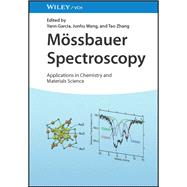Unique and comprehensive overview of versatile applications of Mössbauer spectroscopy in chemistry and material sciences
Mössbauer Spectroscopy provides a comprehensive overview of relevant applications of this physical analysis method in chemistry and material sciences.
The book shows the versatility of Mössbauer spectroscopy in finding useful information on electronic structure, structural insights, and solid-state effects of chemical systems. A wide range of chemical applications and applied concepts are covered as well as numerous examples, selected from recent literature.
To aid in reader comprehension and accessibility, contents are well-structured and divided in different sections covering energy, catalysis, coordination chemistry, spin crossover, sensing, photomagnetism.
Edited by prominent scientists in the field and authored by a group of international experts, Mössbauer Spectroscopy covers sample topics such as:
- Li-ion batteries, catalysts, fuel cells, Fe based silicides and iron phosphates containing minerals
- Gold clusters and gold mixed valence complexes
- Molecule based magnets, photoswitchable spin crossover coordination polymers and molecular sensors for meat freshness control
With comprehensive coverage of the developments in the technique, Mössbauer Spectroscopy is a beneficial resource for researchers, professionals, and academics in chemistry related fields, such as material science, sustainable environment, and molecular electronics. It can be used by newcomers as well as for educational purposes at the master and PhD levels.









